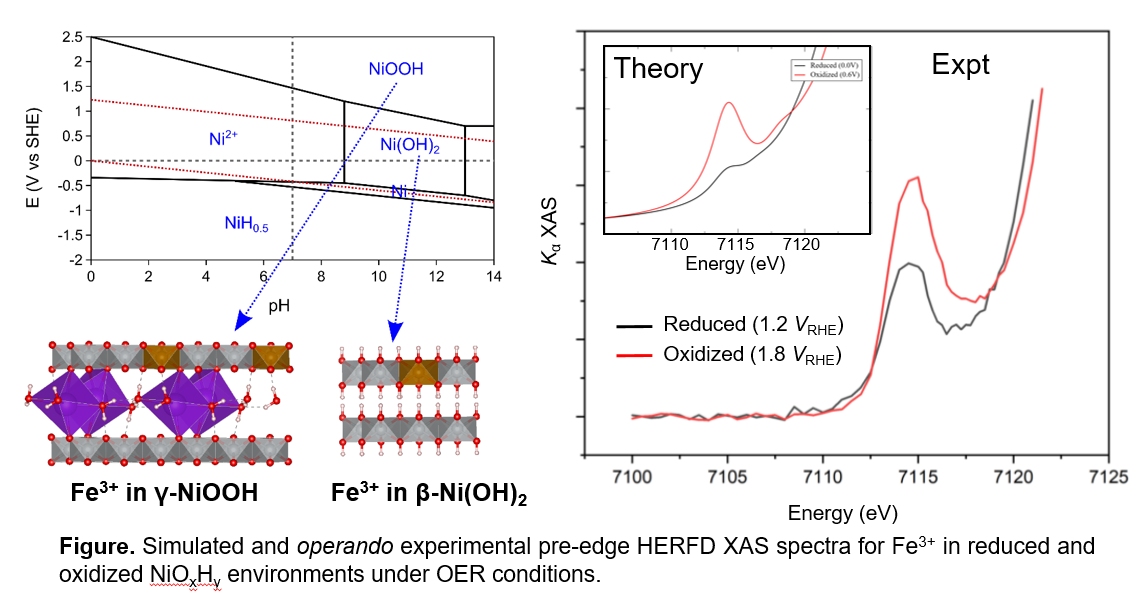2022 Annual Meeting
(532aq) On the Character of the Fe Active Site in Fe-Doped NiOOH Catalysts during Oxygen Evolution Reaction
Authors
Joakim Halldin Stenlid - Presenter, Stanford University | SLAC National Accelerator La
Frank Abild-Pedersen, SLAC National Accelerator Laboratory
Michal Bajdich, SLAC STANFORD
Sergey Koroidov, Stockholm University
Alessandro Gallo, Stanford University
Iron (Fe) doped nickel oxyhydroxides, NiOxHy, are promising catalysts for alkaline oxygen evolution reaction (OER) with potential to replace precious metal catalysts. The importance of Fe for the enhanced catalytic activate in these systems is well known. Yet, the exact role and character of the Fe remains actively debated. In order to engineer catalysts with improved activity, it is essential to gain further understanding of the atomic scale characteristics of the Fe site in its active states. In this work, we combine computational and experimental efforts to elucidate the state of Fe under operation for Fe-doped (~10%) NiOOH. The Fe center is probed in-situ by x-ray emission and adsorption spectroscopic tools as the electrode bias is varied from OER inactive (1.2 VRHE) to active (1.8 VRHE) potentials. Analysis of the x-ray emission and adsorption spectral data paints a common picture where the electronic response of Fe suggests a change in coordination environment with applied overpotential, but a constant formal oxidation state over the studied potential range. Free energy calculations using +U corrected density functional theory (DFT) simulations agrees with this picture. These calculations first verify established thermodynamics that Ni(OH)2, Ni2+, converts to γ-NiOOH, Ni3.67+, going from 1.2 to 1.8 VRHE. In contrast, the Fe center in the doped systems is predicted to remain Fe3+ over the entire potential range. Instead, the oxidation change of the Ni leads to structural changes around Fe3+ that alters the covalence and p-mixing in the Fe electronic states. These changes are observed in the pre-edge of the Kα HERFD-XAS spectra, which is confirmed in DFT simulated spectra. This work sheds light on the nature of Fe under operational conditions, and paves the way towards further tailoring of OER catalysts with enhanced atomic scale properties.


